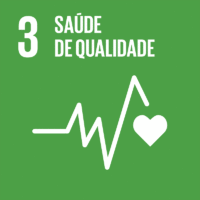Ciência_Iscte
Publicações
Descrição Detalhada da Publicação
Prevalence, severity, and risk factors for erectile dysfunction in a representative sample of 3,548 Portuguese men aged 40 to 69 years attending primary healthcare centers: results of the Portuguese erectile dysfunction study
Título Revista
Journal of Sexual Medicine
Ano (publicação definitiva)
2008
Língua
Inglês
País
Estados Unidos da América
Mais Informação
Web of Science®
Scopus
Google Scholar
Esta publicação não está indexada no Google Scholar
Abstract/Resumo
Introduction. Many studies of the prevalence of erectile dysfunction have been conducted in several countries. This is the first Portuguese study that provides current and comparative data on the prevalence of erectile dysfunction.
Aim. The main objective was to estimate the prevalence of erectile dysfunction in men aged 40 to 69 years and correlate erectile dysfunction to certain risk factors.
Main Outcome Measures. Evaluation of erectile dysfunction was achieved using the International Index of Erectile Function (IIEF), a 15-item questionnaire that has been developed and validated as a brief and reliable self-administered scale for accessing erectile function.
Methods. The Portuguese Erectile Dysfunction Study was based on a questionnaire that included socio-demographic variables, information on lifestyle and risk factors, and the IIEF. In total, 3,548 questionnaires were administered to men aged 40 to 69 years in 50 primary healthcare centers between July 2004 and January 2005 in a combination of both self-administration and interviews. Erectile dysfunction was defined as the inability to achieve and maintain an erection sufficient to permit satisfactory sexual intercourse.
Results. The response rate was 81.3%. The total prevalence of erectile dysfunction was 48.1% (age-adjusted). Prevalence increases with age: 29%, 50%, and 74% in men aged 40 to 49 years, 50 to 59 years, and 60 to 69 years, respectively. Severity of erectile dysfunction also increases with age: 1%, 2%, and 10% of complete erectile dysfunction in men aged 40 to 49 years, 50 to 59 years, and 60 to 69 years, respectively.
Conclusions. The prevalence of erectile dysfunction is strongly related to age. There is also a correlation with the health status of participants.
Agradecimentos/Acknowledgements
--
Palavras-chave
Erectile dysfunction,Epidemiology,Risk factors,Sexual function,Prevalence,Primary care
Classificação Fields of Science and Technology
- Medicina Clínica - Ciências Médicas
Registos de financiamentos
| Referência de financiamento | Entidade Financiadora |
|---|---|
| POCTI/ESP/45965/2002 | Fundação para a Ciência e a Tecnologia |
Contribuições para os Objetivos do Desenvolvimento Sustentável das Nações Unidas
Com o objetivo de aumentar a investigação direcionada para o cumprimento dos Objetivos do Desenvolvimento Sustentável para 2030 das Nações Unidas, é disponibilizada no Ciência_Iscte a possibilidade de associação, quando aplicável, dos artigos científicos aos Objetivos do Desenvolvimento Sustentável. Estes são os Objetivos do Desenvolvimento Sustentável identificados pelo(s) autor(es) para esta publicação. Para uma informação detalhada dos Objetivos do Desenvolvimento Sustentável, clique aqui.

 English
English


